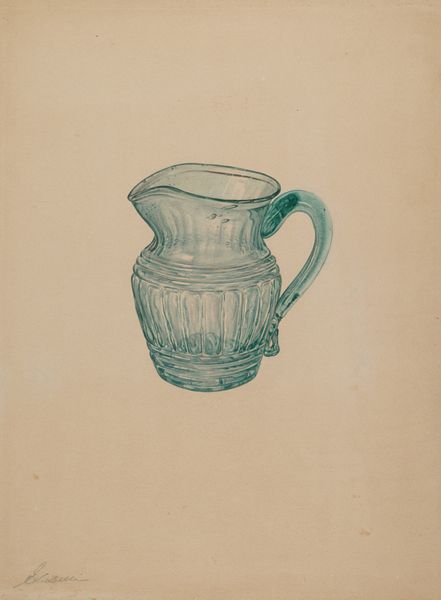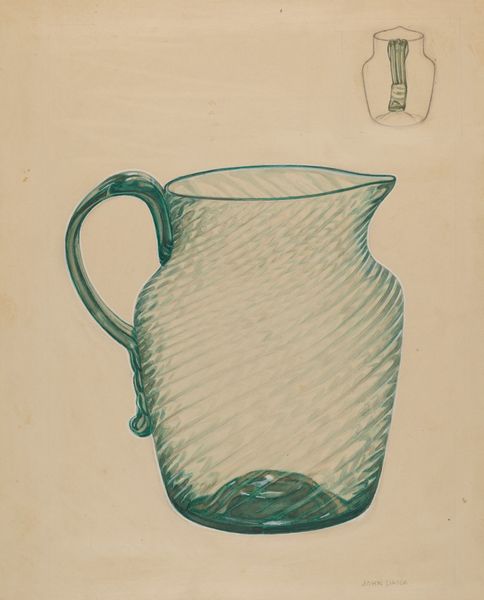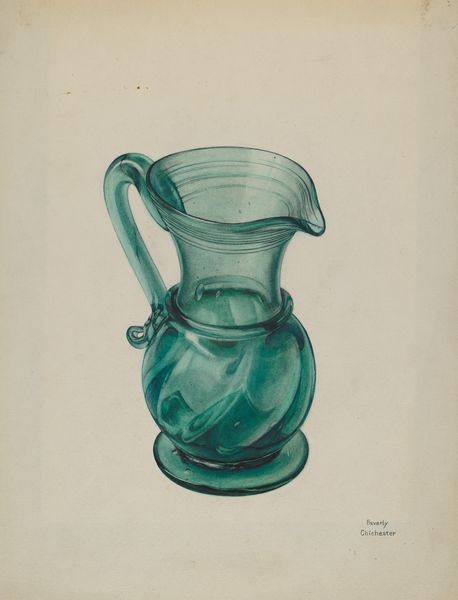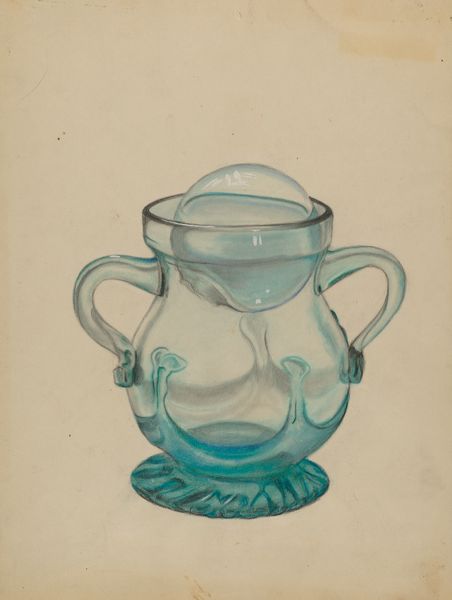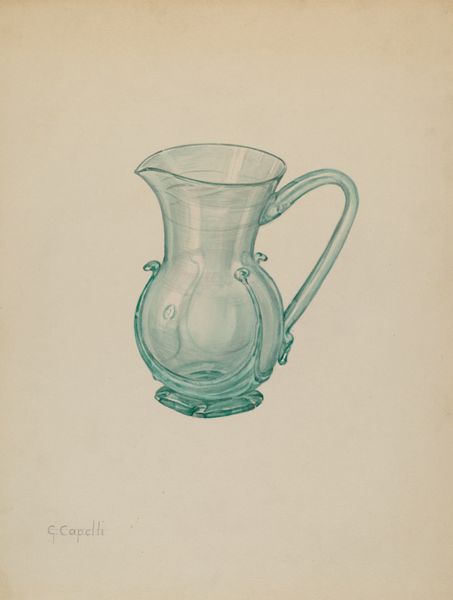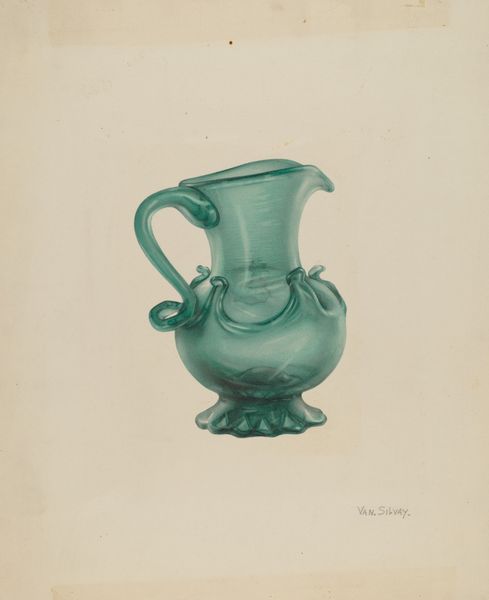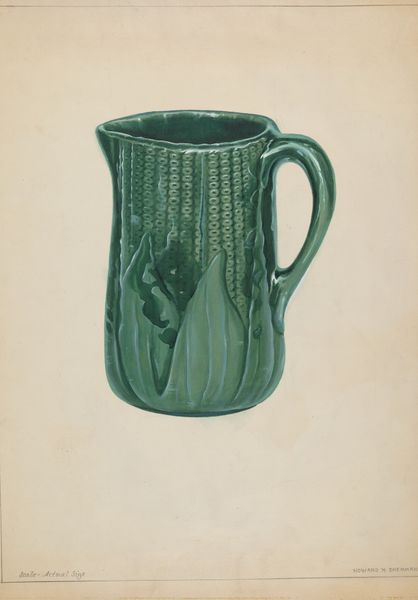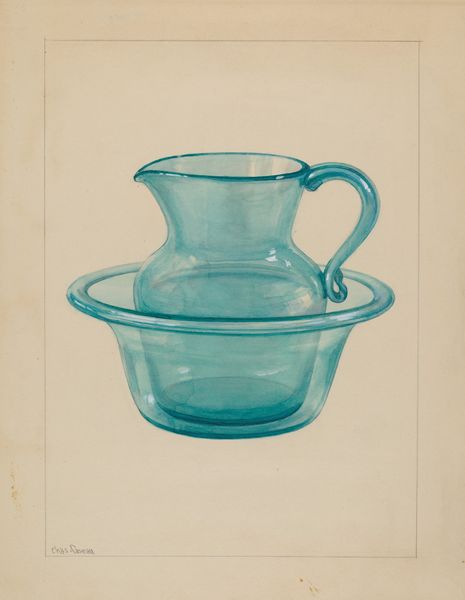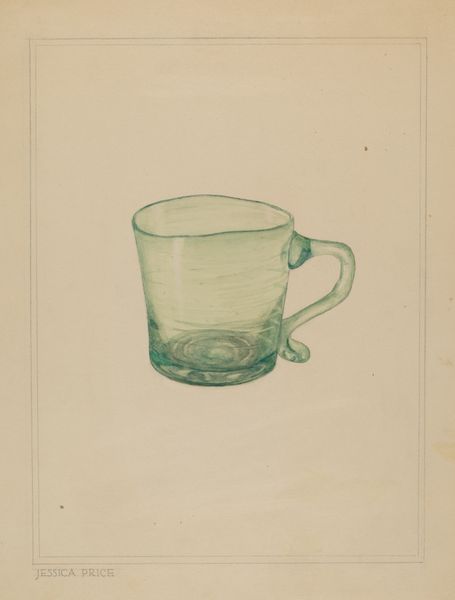
drawing, glass, watercolor
#
drawing
#
glass
#
watercolor
#
watercolor
Dimensions: overall: 35.7 x 30.5 cm (14 1/16 x 12 in.)
Copyright: National Gallery of Art: CC0 1.0
Curator: Beverly Chichester's watercolor drawing, "Glass Pitcher," created around 1937, offers a rather captivating, intimate look at an everyday object. Editor: It strikes me as both elegant and somehow… melancholy. The soft color palette and diffuse light evoke a sense of stillness, almost as if capturing a memory. Curator: The pitcher is interesting viewed through the lens of domesticity in the 1930s. At this time, glassmaking became less craft-based and moved to industrialized manufacturing. Glassware, in particular, signaled particular aspirations of American life, mirroring economic and social realities for different households. Editor: Glassware also traditionally symbolizes fragility, ephemerality – our relationships, our ambitions. Given the social unrest during the Great Depression era, do you think there’s something poignant in choosing this kind of impermanence as subject? The swirling, almost restless quality of the applied watercolor reflects instability as a human condition. Curator: Definitely. The material itself tells a story. As does the artist’s careful, almost reverential rendering, a visual conversation between mass-produced item and hand-rendered object that adds tension to domesticity. This watercolor medium also feels important in terms of accessing identity, gender and race: water-based media were often valued less, being a “female” medium, while oils stood as patriarchal markers of genius and authority. Editor: Absolutely. Beyond technique, let's look at iconography. Water, which the pitcher is designed to hold, is a powerful symbol: life, purification, the subconscious. It is feminine and nurturing. And even the color— the light greens invite peace, nature, rest. It has an emotionally restorative effect. Curator: Agreed. This interplay emphasizes how everyday objects subtly reflected aspirations for social mobility, ideas about domestic space, even challenges in an era fraught with economic strife. The piece reflects those ideas, offering insight into the daily realities of this era in time. Editor: I like thinking about what’s below the surface: both literally in terms of the watery contents the pitcher would hold, and more figuratively in terms of its ability to reflect human yearning. Curator: I find I look at this work in a different light after your insights. Considering the intersections of material culture and gendered value sheds an exciting light.
Comments
No comments
Be the first to comment and join the conversation on the ultimate creative platform.

